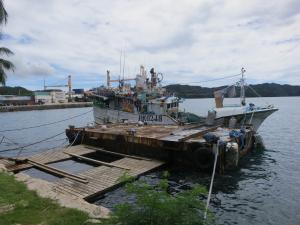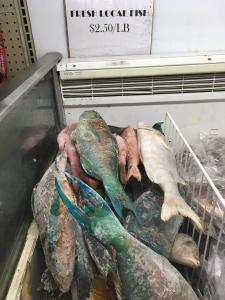Effects of Palau fishing restrictions studied
University of Hawaiʻi at MānoaAssociate Professor, Natural Resources and Environmental Management
Rachel Dacks
College of Natural Sciences
Restrictions associated with the newly enacted Palau National Marine Sanctuary (PNMS) are likely to negatively affect the supply of offshore fish, including tuna, in the short term, but may open up opportunities for native Palauans in the long term, according to a team led by University of Hawaiʻi at Mānoa researchers.
Large-scale marine protected areas, which can ban fishing from vast swaths of the ocean, are an increasingly popular tool used by countries to meet international conservation targets, but the potential socio-economic effects are largely unknown.
“While banning fishing in this vast area sounds like a complete win for conservation, the success of the PNMS and other large-scale marine protected areas will depend on the trade-offs to the ecological and human dimensions of the system,” said Kirsten Oleson, the study’s principal investigator and an assistant professor in the College of Tropical Agriculture and Human Resources Department of Natural Resources and Environmental Management.
The UH Mānoa researchers documented the value chain of reef and offshore fisheries in Palau prior to the newly enacted PNMS, which closed 80 percent of Palau’s exclusive economic zone to fishing on January 1, 2020. The value-chain analysis tracked the volumes, prices and end consumers of the fish in Palau for reef and offshore fisheries.
Through interviews with local businesses involved in fish buying and selling, the researchers found that the vast majority of offshore fish eaten in Palau currently comes from industrial vessels fishing in Palau’s waters. There is concern that the closure of the majority of the fishing waters will cause these vessels to leave and that there will not be enough fish to feed local people and tourists.
Oleson explained, “Our study set out to discover how much fish is eaten in Palau, who catches it, how it flows through the economy, and who eats what. Knowing this can help us identify ways policymakers and managers can improve the fisheries value chain, so that any supply disruptions from the PNMS are not harmful to local people and the economy.”
On the other hand, she noted that this provides an opening for the development of a local Palauan offshore fishery that could provide enough offshore fish to meet current demand. “But this fishery doesn’t exist yet,” she cautioned, “and it will need government support to develop.”
The researchers stressed that any interventions must reinforce, and not undermine, important social networks that involve reef fish sharing. “While many recent studies claim that the ability to sell fish is what causes people to fish, suggesting that market interventions are the solution to overfishing, we actually found a much more complex situation, where people fish largely for food and custom, suggesting that non-market interventions (such as efforts to shift diet choices) may be most effective for managing reef fish,” said lead author Rachel Dacks, a post-doctoral researcher in UH Mānoa’s College of Natural Sciences.
Supported by the National Geographic Pristine Seas Project, this paper is one output of a project to understand the potential socioeconomic impacts of Palau’s newly implemented National Marine Sanctuary Act. The information it gathers is key for guiding effective implementation of the PNMS and assessing future impacts of the policy.
The UH-led study was published in Marine Policy. Other collaborating authors are from the Stanford Center for Ocean Solutions, The Pacific Community and the Palau International Coral Reef Center.
For more info, follow Oleson on Twitter.


